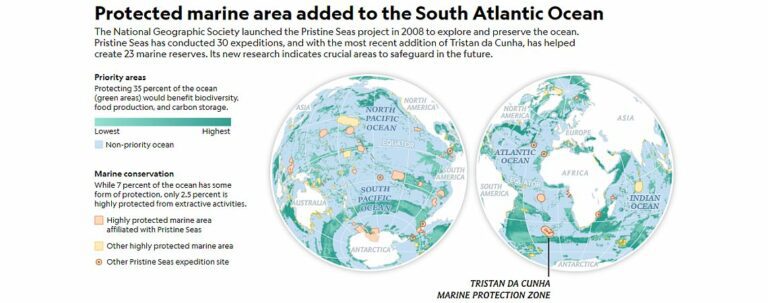As reported by National Geographic, the Tristan da Cunha Island is an important seabird sanctuary and home to tens of millions of albatross, penguins, and other species. A newly declared marine protection zone will protect the critical foraging grounds the birds need to thrive.
The waters around one of the world’s most remote inhabited islands, in the middle of the South Atlantic Ocean, are set to become the fourth largest completely protected marine area in the world, and the largest in the Atlantic.
Tristan da Cunha, a British territory, is 2,300 miles east of South America and 1,600 miles west of South Africa. To reach it requires a seven-day boat trip from South Africa, and once you’re there, “you feel so much like you’re at the edge of the world,” says Jonathan Hall, the head of the U.K. overseas territory unit at the Royal Society for the Protection of Birds (RSPB).
Now, this four-island archipelago will be the site of a marine sanctuary that spans 265,347 square miles, making it almost three times larger than the United Kingdom. Announced today by the Tristan da Cunha government, 90 percent of the waters around the island chain will become a “no-take zone” in which fishing, mining, and other extractive activities are banned.
Not only will this help bolster a small lobster fishery outside the sanctuary, say conservationists, but also it will protect foraging grounds for the tens of millions of seabirds that roost on the islands, such as yellow-nosed albatross and rockhopper penguins, and habitat for seals, sharks, and whales.
The new protected area will join the U.K.’s Blue Belt Programme, which, as of today, safeguards 2.7 million square miles of marine ecosystems around the world. The new sanctuary is the result of a collaboration between the Tristan da Cunha and U.K. governments, and a number of other conservation groups, including RSPB, which has worked in the region for 20 years, and the National Geographic’s Society’s Pristine Seas initiative.
To read the National Geographic’s full news article please click here.

